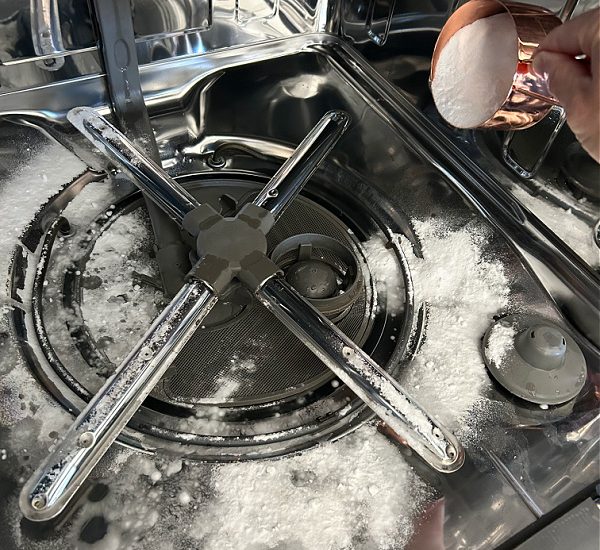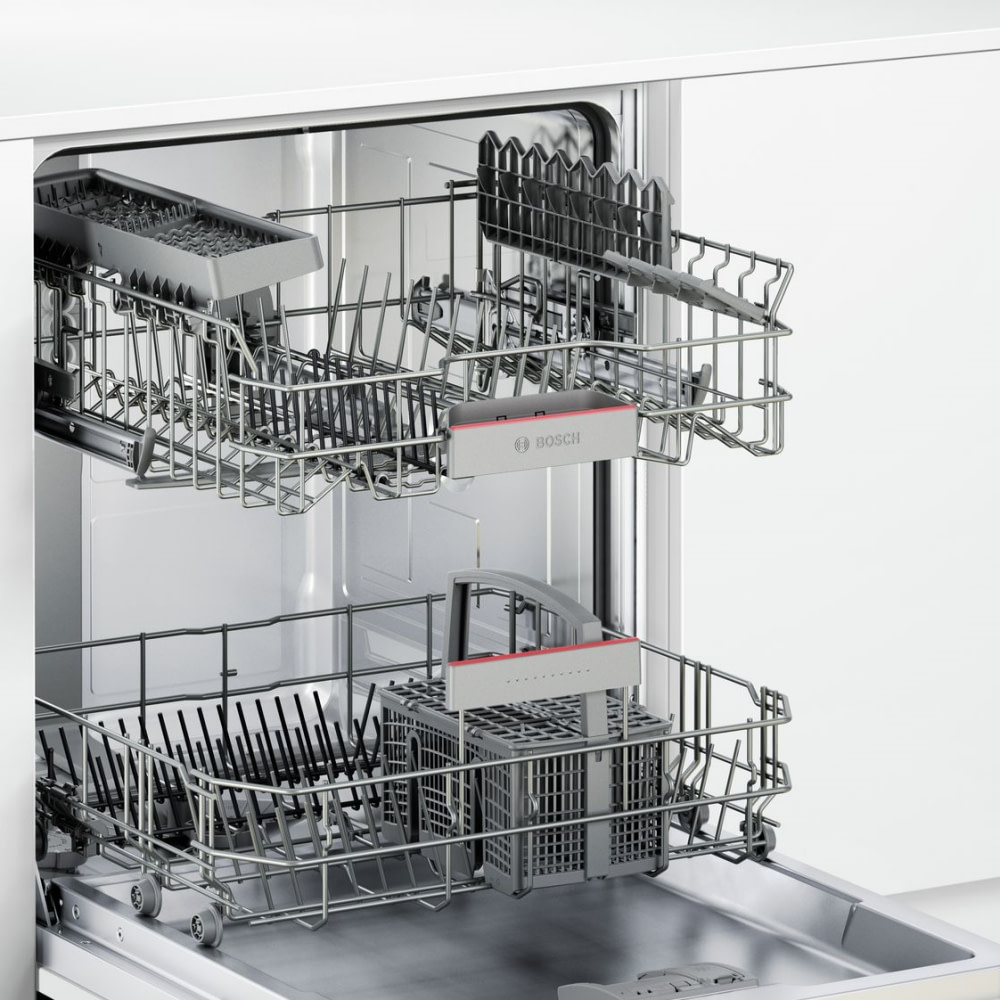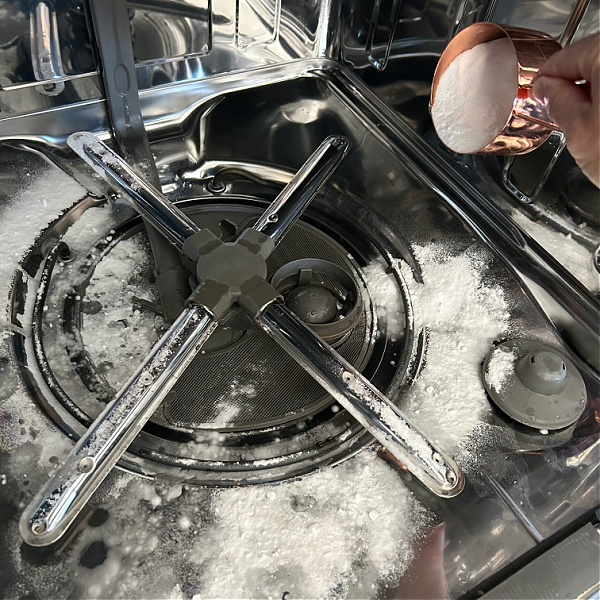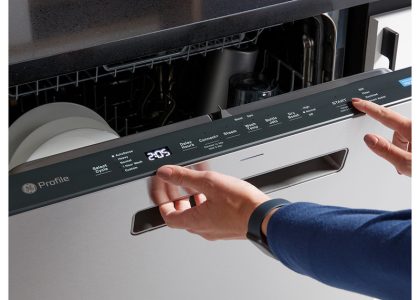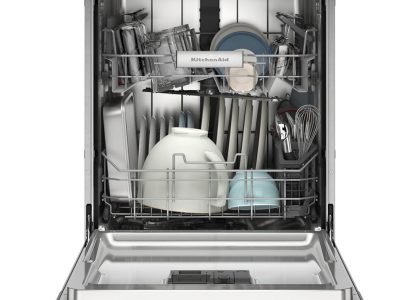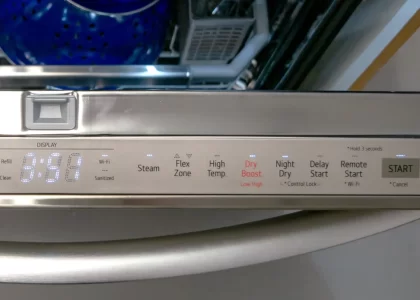Introduction to KitchenAid Dishwasher Maintenance
Proper maintenance ensures your KitchenAid dishwasher runs smoothly. Like all appliances, it needs regular cleaning. Dust, food particles, and grease can build up over time. They can cause bad smells and affect performance. That’s why knowing how to clean a KitchenAid dishwasher is key. In this section, we will cover the basics you need to keep your dishwasher in top shape. We’ll take you through preparing it for cleaning. This will help prevent problems and extend its life. Remember to do maintenance regularly. It’s not hard and saves you time and money in the long run.
Preparing Your Dishwasher for Cleaning
Before diving into how to clean a KitchenAid dishwasher, preparation is crucial. First, empty the dishwasher. Remove all dishes and utensils. Check the dishwasher for items that might block the spray arms or filter. These can include utensils, broken glass, or large food particles. Next, make sure the appliance is turned off. You don’t want it running while you’re working on it.
To prepare, you’ll need a few tools. Gather a soft brush, a cloth, and mild detergent. If there’s tough grime, consider using white vinegar. It’s effective and safe for most dishwasher components. Always wear gloves to protect your hands from dirt and cleaning solutions. Now, with the dishwasher emptied and supplies ready, you’re set to begin cleaning.
Cleaning the Dishwasher Filter
The filter is a key part of your KitchenAid dishwasher. It traps food particles to prevent them from redepositing on dishes. Over time, the filter can become clogged, which hampers its efficiency. A clean filter is vital for your machine to function well.
Here’s how to clean a KitchenAid dishwasher filter:
- After turning off your dishwasher, remove the bottom rack to access the filter.
- Twist the filter gently and lift it out. Some models may have a secondary filter – take both out.
- Rinse the filters under running water to remove loose particles. Use a soft brush if needed.
- For stubborn grime, soak the filters in warm, soapy water or a 1:1 white vinegar solution.
- After soaking, brush the filters again, rinse thoroughly, and let them air dry.
- Once dry, reinsert filters. Make sure you lock them in place.
It is essential to clean the dishwasher filter regularly. This will ensure that your dishwasher continues to run effectively and efficiently. Aim to clean it once a month, or more often if you notice it getting dirty quicker. Remember, a clean filter means cleaner dishes and a happier kitchen.
Cleaning the Dishwasher Spray Arms
Cleaning your KitchenAid dishwasher’s spray arms is crucial. Over time, tiny food particles and mineral deposits from water can block the holes. This leads to poor dish cleaning performance. Follow these steps to clean the spray arms effectively.
- Start by turning off the dishwasher. Ensure it’s not set to run during cleaning.
- Remove the bottom rack to access the lower spray arm. For the upper arm, you might need to remove the top rack.
- Gently take off the spray arms. Some might unscrew, while others may clip off.
- Once removed, rinse the spray arms under warm water. Use this to dislodge loose debris.
- Inspect each hole in the spray arms for blockages. If you find any, use a toothpick or similar tool to carefully remove them.
- For tough buildup, soak the spray arms in white vinegar for about 20 minutes.
- After soaking, give them another rinse under water to wash away any remaining particles.
- Dry the spray arms. Make sure they’re completely dry to avoid water spotting.
- Reattach the spray arms securely. Check they can rotate freely and aren’t hindered.
Do this cleaning routinely to maintain your dishwasher’s efficiency. If cleaning doesn’t improve the cleaning performance, you might need to do further troubleshooting or consider replacing the spray arms.
Wiping Down the Dishwasher Tub and Door Gasket
The next step in how to clean a KitchenAid dishwasher involves the tub and door gasket. These areas can collect grime and food residues that aren’t always seen. Regular cleaning can prevent buildup and ensure a good seal when the door is closed.
Start with the dishwasher tub. Use a damp cloth and mild detergent to wipe down the interior walls. For hard-to-remove stains, use a non-abrasive scrubber. Be sure to clean around the soap dispenser and any nooks or crannies.
Next, focus on the door gasket. This rubber seal keeps water from leaking out during cycles. Dirt and food particles can prevent a tight seal and lead to leaks. Use the cloth to carefully wipe along the gasket. Pay special attention to the lower area where food often gets trapped.
For both the tub and gasket, white vinegar can act as a natural cleaner for stubborn grime. Apply it with a spray bottle or soak a cloth in it, then wipe the areas gently. After cleaning, dry with a towel to prevent water spots and mildew growth.
Regular wiping of the tub and door gasket is often overlooked, but it’s vital for a clean dishwasher and kitchen.
Deodorizing and Removing Odors
Even if a KitchenAid dishwasher looks clean, it can sometimes harbor unpleasant odors. These smells can transfer to your dishes, affecting the freshness of your kitchen as well. To deodorize and remove these stubborn smells, here’s what you can do:
- Start by running a rinse cycle with an empty dishwasher to wet the inside surfaces.
- Place a cup of white vinegar on the top rack of the dishwasher. Ensure it’s safe from tipping.
- Run a full cycle with the hottest water setting to spread the vinegar throughout the machine.
- Vinegar works well to neutralize odors and dissolve residue that may cause smells.
- After the cycle with vinegar, sprinkle baking soda across the bottom of the dishwasher.
- Run a short cycle with hot water to further clean and deodorize the interior.
- Baking soda absorbs odors and leaves your dishwasher smelling fresh.
- Keep the dishwasher door slightly open after cycles to let air circulate and prevent mold.
These steps to deodorize your KitchenAid dishwasher should help eliminate bad smells and maintain a fresher scent. Repeat this process monthly or as needed whenever you notice lingering odors. Regular upkeep will ensure your dishwasher remains a clean, odor-free appliance in your kitchen.
Monthly Maintenance Tips
To keep your KitchenAid dishwasher in top condition, follow these monthly maintenance tips:
- Inspect and Clean the Filters: Check filters monthly for debris. Clean as instructed in this guide.
- Examine Spray Arms: Make sure spray arms are not blocked. Do a monthly check and clean.
- Wipe Down Surfaces: Regularly wipe interior surfaces, including the tub and door gasket.
- Run a Vinegar Cycle: Once a month, run an empty cycle with a cup of vinegar on the top rack. This helps to dissolve grease and remove odors.
- Sprinkle Baking Soda: After the vinegar cycle, add baking soda to the bottom and run a short cycle. Freshens the machine.
- Check for Wear: Inspect racks, utensil holders, and spray arms for wear or damage.
- Leave the Door Ajar: After use, leave the door open slightly to air out and prevent mildew.
- Review the Manual: Refer to your dishwasher’s manual for any specific maintenance advice.
Performing these easy tasks every month will prevent most problems. Your dishwasher will clean better and last longer. If problems persist, consult the troubleshooting section next.
Troubleshooting Common Dishwasher Cleaning Issues
When you maintain your KitchenAid dishwasher regularly, you prevent many problems. But sometimes, issues can still arise. Knowing how to tackle these issues is crucial for keeping your dishwasher running smoothly. Here are some common cleaning issues and how to troubleshoot them.
- Dishes Are Not Getting Clean: If your dishes come out dirty, check the filters and spray arms. Make sure they are not clogged with food debris. Also, ensure that you’re using the right type and amount of detergent.
- Dishwasher Leaves Spots on Dishes: Water spots can occur due to hard water. To address this, use a rinse aid or adjust the dishwasher’s water softener, if available.
- Dishwasher Isn’t Draining Properly: Look for any blockages in the drain. Check the drain hose for kinks or clogs. Make sure the kitchen sink drain is not clogged, as this can affect your dishwasher.
- Unpleasant Smell from the Dishwasher: Clean the filter, wipe down the interior, and use vinegar and baking soda as described earlier. Consistent cleaning usually keeps odors at bay.
- Dishwasher Is Noisy: Noise may indicate a spray arm is hitting something inside, or there might be a loose utensil. Rearrange the dishes and ensure nothing is obstructing the arms’ movement.
- Door Doesn’t Close Properly: Check the door latch for damage, and ensure the door gasket is clean and in good condition. Replace it if necessary.
By staying vigilant and addressing issues quickly, you can often fix common problems yourself. For those that you can’t, don’t hesitate to contact a professional. Remember, keeping up with ‘how to clean a KitchenAid dishwasher’ steps will reduce the risk of these issues occurring. Always refer to your dishwasher’s user manual for model-specific troubleshooting guidance.

